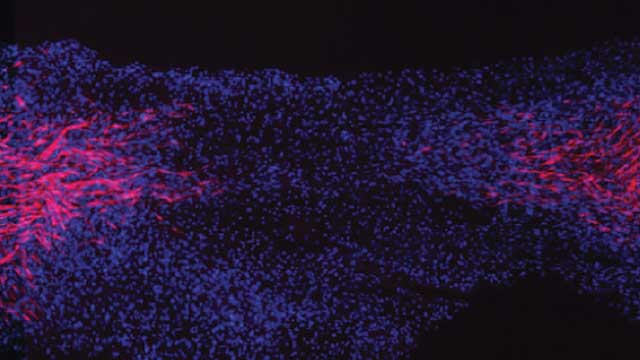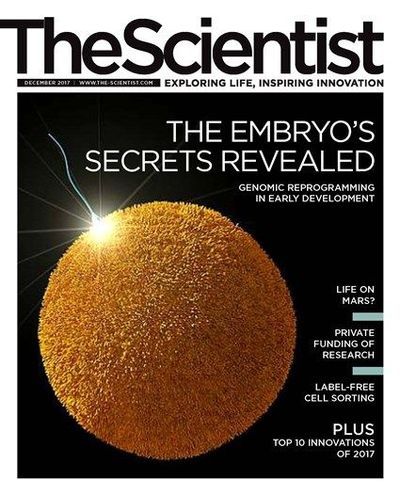 REGENERATION: Fluorescently labeled Schwann cells (pink) migrate into the wound site of a severed nerve and lay the foundations for nerve repair.MELANIE CLEMENTS, PARRINELLO LAB
REGENERATION: Fluorescently labeled Schwann cells (pink) migrate into the wound site of a severed nerve and lay the foundations for nerve repair.MELANIE CLEMENTS, PARRINELLO LAB
EDITOR'S CHOICE IN CELL BIOLOGY
The paper
M.P. Clements et al., “The wound microenvironment reprograms Schwann cells to invasive mesenchymal-like cells to drive peripheral nerve regeneration,” Neuron, 96:98-114.e7, 2017.
To protect and repair
In the peripheral nervous system, axons are able to mend themselves after injury thanks to Schwann cells, a type of glial cell responsible for producing myelin, the fatty substance that wraps around some nerve fibers. Schwann cells migrate to the injury site and help guide the regrowing axons through a connective-tissue bridge that forms across the gap.
Dual identities
Prior studies have shown that while aiding repair, Schwann cells transition from a myelinating phenotype to a progenitor-like state. This switching is similar to what happens when adult cells are genetically...
Interested in reading more?





